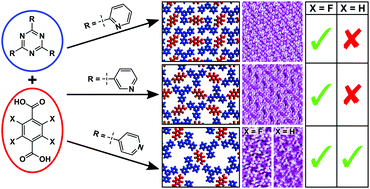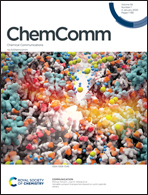Fluorinated carboxylic acids as powerful building blocks for the formation of bimolecular monolayers†
Abstract
We compare the ability of a prototypical dicarboxylic acid and its fluorinated analogue to act as molecular building blocks for the formation of self-assembled monolayers. Whilst fluorination is found to prevent homomolecular self-assembly, it greatly increases the ability of the carboxylic acid to act as a hydrogen bond donor for the formation of bimolecular networks.



 Please wait while we load your content...
Please wait while we load your content...